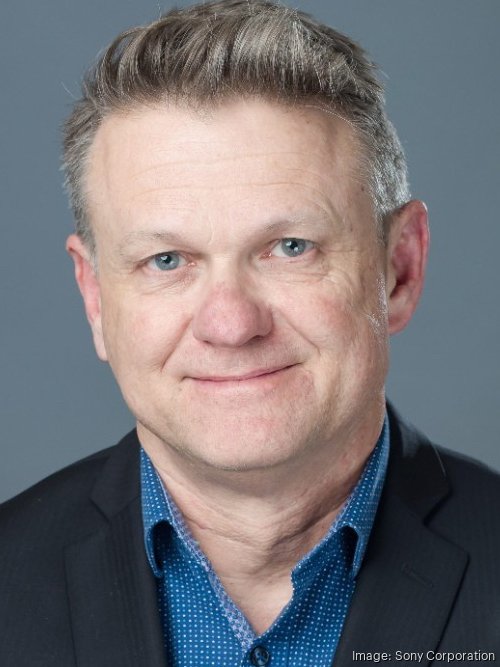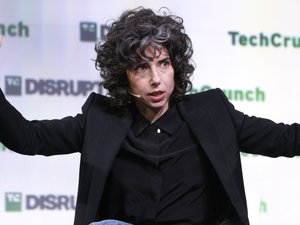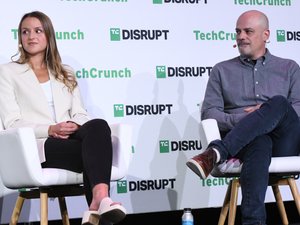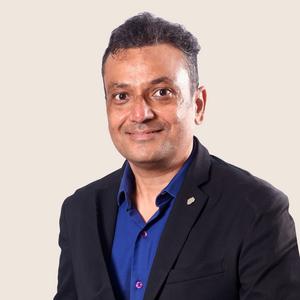
When thinking of Silicon Valley semiconductor companies, Sony Group Corporation is probably not one that comes to mind even though it’s had operations in the Bay Area for almost three decades.
Sony is known for its televisions, cameras and PlayStation gaming consoles. But Mark Hanson, an executive with San Jose-based Sony Semiconductor Solutions of America (SSS-A), said the chip business is an important product line for the Japanese company.
“The key thing about semiconductors is it’s enabling base hardware, and historically a lot of the sensors that we build get used in [other] brands,” Hanson told the Business Journal. “Semiconductors empower and create a lot of capabilities, not only for Sony’s own branded product, but also for a lot of other third-party branded products. We’re kind of a hidden ingredient to a lot of other vendors.”
Hanson, whose title is vice president of technology and business innovation and head of marketing for Sony Semiconductor Solutions, cited the example of Sony’s strategic partnership with Microsoft Corp.
In 2020, SSS announced the launch of Aitrios, a visual artificial intelligence platform that set out to make the technology more affordable and scalable for businesses to use. Hanson highlighted how Aitrios can be used in the retail industry. Here, the platform can used both to improve a store’s operations by increasing efficiencies and improving the shopping experience.
“The concept is knowing that if a customer comes in and the product’s not there, you lose that sale,” Hanson said. “We can enable customers to have a better experience in the store. That’s the way we think of our role because we can do this [vision AI] at scale. It’s not an Apollo moonshot activity.”
The Aitrios platform supports Sony’s IMX500, which the company bills as the world’s first intelligent vision sensor. That means it performs AI and logic on the back of the chip, allowing for faster processing, improved analytics and less data clutter than running artificial intelligence on the cloud after data transfer.
“Think about what an image sensor is: it’s taking light and converting it into an image,” Hanson said about the technology involved in Aitrios. “We’re going one step further and identifying what is in that image. We’re actually applying some of that skill, that we understand the light and how those electrons operate, and turn them into more actionable object detection or classification that can be used in computer vision.”
Demos of the Aitrios platform and the IMX500 image sensor can be seen at Microsoft’s Co-Innovation Labs, which in September opened its latest location in San Francisco at 555 California St. This is the fifth lab Microsoft has opened up outside of the company’s Redmond, Washington headquarters. Sony, as a strategic partner, is a participant across all of these Microsoft spaces spread around the world.
The labs provide tools and working space to selected startups and enterprise companies. Companies that take part in the labs are offered the chance to develop their ideas into fleshed out solutions.
“The Co-Innovation Labs is a place for customers and partners to test minimum-viable products and develop cutting-edge solutions with Sony’s resources and Microsoft’s support,” Hanson said in a Microsoft-published blog last week.
According to Microsoft, the companies decided to open the space in San Francisco to build on the Bay Area’s reputation for being a hotbed of innovation and the concentration of AI innovation among startups occurring here.
Sony, which has had a presence in Silicon Valley for close to three decades, recently wrapped up a hackathon with tinyML, a foundation focused on using machine learning sensors for Internet of Things applications, and the City of San Jose. The hackathon was focused on how to increase pedestrian safety in the Bay Area’s largest city.
Hanson said the partnership with Microsoft is just the beginning.
“Computer vision is still very early on, lots of experimentation,” he said. “We want to move it to commercialization. We see how much of an advantage vision AI gives when it’s deployed. We’re here to help businesses, cities, and more use this technology to help them improve their communities and experiences.”






